Associate Professor in Computational Structural Mechanics
Department of Structure and Materials
Faculty of Civil Engineering
Universiti Teknologi Malaysia
Room : M50-02-29
Tel : +607 553 86 86
Fax : +607 556 61 57
Email : arazin@utm.my
Ahmad Razin Zainal Abidin
B.Eng. (UTM), M.Sc. (UTM), Ph.D. (Imperial College London)
⇒ ORCID iD : 0000-0002-3264-1908
⇒ Web of Science ResearcherID: D-8333-2019
⇒ Scopus Author ID: 56997005500
I began my career as an academic at Universiti Teknologi Malaysia (UTM) in September 2005, serving as a tutor for the IT Unit in the Faculty of Civil Engineering. During my time in this role, I fully immersed myself in the academic culture of UTM, constantly seeking opportunities to expand my knowledge. In 2008, I was thrilled to be promoted to the position of lecturer after completing my Master’s degree in March of that year. As a lecturer, I have had even more opportunities to contribute to the development of both my students and the university as a whole, particularly through teaching and supervising computational-engineering-related subjects... read more…
News & Updates
blogging…
NURBS-Divergence-Meshless (NDM) method
..I'm proud to share our latest research published in Computers & Mathematics with Applications 📚: 🔗 NURBS-Divergence-Meshless (NDM) MethodA novel meshless formulation that applies the divergence theorem in NURBS parameter space to efficiently discretize governing...
State-of-the-art review on meshless methods in the application of crack problemsState
Abstract: Meshless or meshfree methods (MMs) are practical and excellent numerical techniques for solving crack problems. With the inherent limitations of mesh-based methods such as the finite element method (FEM) in modeling cracks, MMs have captivated the attention...
N-RPIM for structural analysis
The study proposes a new way of combining two mathematical techniques, NURBS and RBF, within the RPIM framework. NURBS are used to model the geometry of the problem domain exactly, while RPIM is used for field variables interpolation. This new approach is called...
Very Interesting Talk by My Former PhD Supervisor
https://www.youtube.com/watch?v=BcXti4VpM9A [click here] This is a live webinar Distinguished Lecture Series #33 organised by the Faculty of Engineering, Universiti Teknologi Malaysia (UTM). The relevant information is as follows :- Topic : "High-fidelity modelling of...
FEM Book (2D)
This book can be considered as an extension to the previous publication (Finite Element Formulations for Statics and Dynamics of Frame Structures) as it dwells on two-dimensional formulation of continuums. Also, the discussion has been extended to nonlinear...
FEM Book (1D)
This book has evolved from a series of lecture notes of the first author refined over the period of ten years with the co-authors. It revolves around frame structural analysis, both statics and dynamics. In Chapter 1, the book begins with the basic concepts of...
HERIOT-WATT-MSNM FEM 5-Days Crash Course
HERIOT-WATT-MSNM FEM 5-Days Crash Course Date : 26th-30th August 2019 [Monday-Friday] Venue : Heriot-Watt University Malaysia, Putrajaya Click here to register !! About The Institutions HERIOT-WATT UNIVERSITY MALAYSIA (HWUM) Heriot-Watt University is a public research...
Workshop on 1D-FEM @ UMP
2 Days Workshop on Finite Element Method Can You Solve 1D FEM? : Numerical programming Main organizer : Malaysian Society for Numerical Methods (MSNM) Co-organizers : Faculty of Computer Systems & Software Engineering (FSKKP), UMP Faculty of Civil Engineering...
APSEC 2018 – Call for participants
Lets join us at APSEC2018 in Langkawi !! APSEC2018 - call-for_participants
MATLAB codes
sharing the knowledge…
NURBS-Divergence-Meshless (NDM) method
..I'm proud to share our latest research published in Computers & Mathematics with Applications 📚: 🔗 NURBS-Divergence-Meshless (NDM) MethodA novel meshless formulation that applies the divergence theorem in NURBS parameter space to efficiently discretize governing...
Radial Basis Function (RBF)
Radial Basis Function (RBF)The radial basis function (RBF), also known as the Radial Point Interpolation Method (RPIM), is a meshfree method used to construct an interpolated function to fit a curve. It uses a set of radial basis functions to interpolate between nodal...
Point Interpolation Method (PIM)
The point interpolation method (PIM) is a meshfree method used for fitting a curve based on a set of nodal values at specified locations. The PIM uses polynomial interpolation to fit the curve, and the number of polynomial terms required increases with the number of...
FEM Shape Function Generator – MATLAB CODE
1D Shape Function clear, clcsyms xq = 2; %order of poly (eg. quad--> q=2)L = 1; %create ux = a1 + a2x + ...A1 = []; A0 = []; %temporary variablesux = 0;for i = 1:q+1aN = ['a' num2str(i)];syms(aN);ux = ux + aN*x^(i-1);A0 = cat(2,A0,[aN,',']);A1 =...
Library of Codes for Finite Elements
Bar | k1 = E*A/L * [1 -1 ; -1 1] r1 = [q*L/2 ; q*L/2]Beam | ka = 12*E*I/L^3 kb = 6*E*I/L^2 kc = 4*E*I/L kd = 2*E*I/L k1 = [ ka kb -ka kb; kb kc -kb kd; -ka -kb ka -kb; kb kd -kb kc] q1 = [q*L/2; q*L^2/12; q*L/2; -q*L^2/12]Truss | c = cos(B); s = sin(B);k1 = E*A/L*...
Create Q9 Elements for 2d Rectangular Domain (Octave/MATLAB)
function [node_xy,elem_node] = ElemQ9(L,H,m,n,varargin) % ====================================================% % function to create Q9 elements (2D) % % INPUT: % % > length (L) and height (H), % % > division over x (m) and division over y (n) % % > option...
Create Q4 Elements for 2d Rectangular Domain (Octave/MATLAB)
function [node_xy,elem_node] = ElemQ4(L,H,m,n,varargin) % ====================================================% % function to create Q4 elements (2D) % % INPUT: % % > length (L) and height (H), % % > division over x (m) and division over y (n) % % > option...
FB Live [MSNM group] – Numerical Methods: How it works?
In the live videos, I tried to explain how does numerical methods (in computational mechanics) work, in a general way of discussion.. Numerical methods always start 'backward' by having an assumed solution first, and some ways in the process, they try to make the...
Plotting deformation of frame structure (FEM)
This is a MATLAB code to plot a deformation of planar frame structure. Since the formulation involves transformation of local elements to a global system, plotting using a simple w(x) versus x is not possible.. We need to transform back the DOFs obtained in the global...
MATLAB VIDEO FOR BEGINNER (in Bahasa Melayu)
<<< CLICK HERE





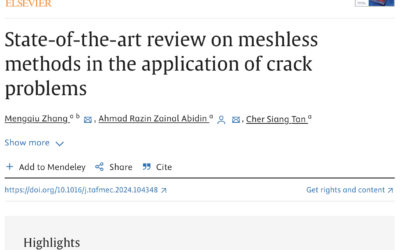
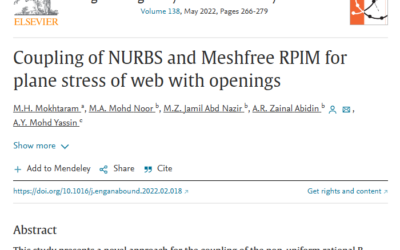
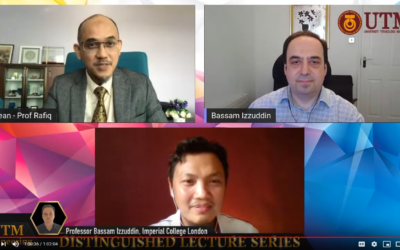
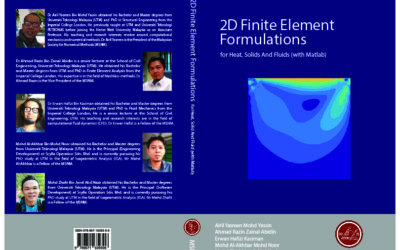
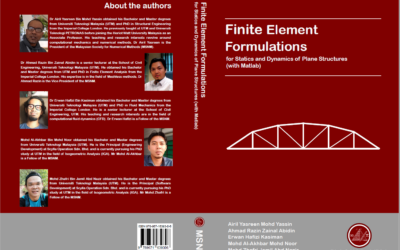
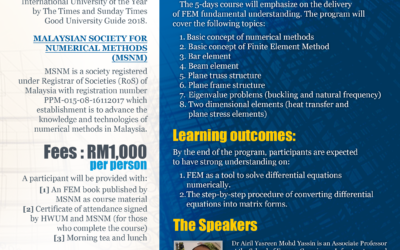


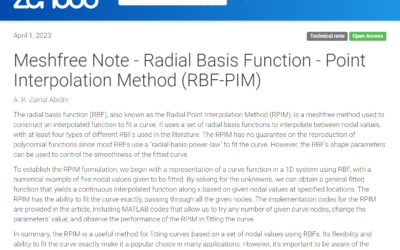

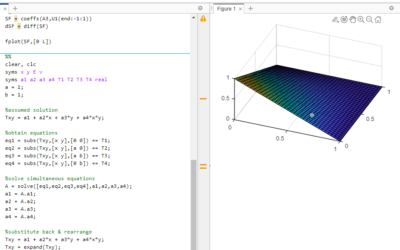

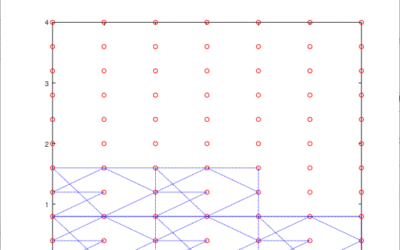
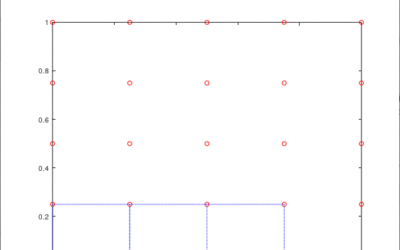
![FB Live [MSNM group] – Numerical Methods: How it works?](https://people.utm.my/arazin/wp-content/uploads/sites/595/2020/06/Capture1-400x250.png)


